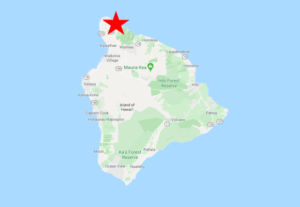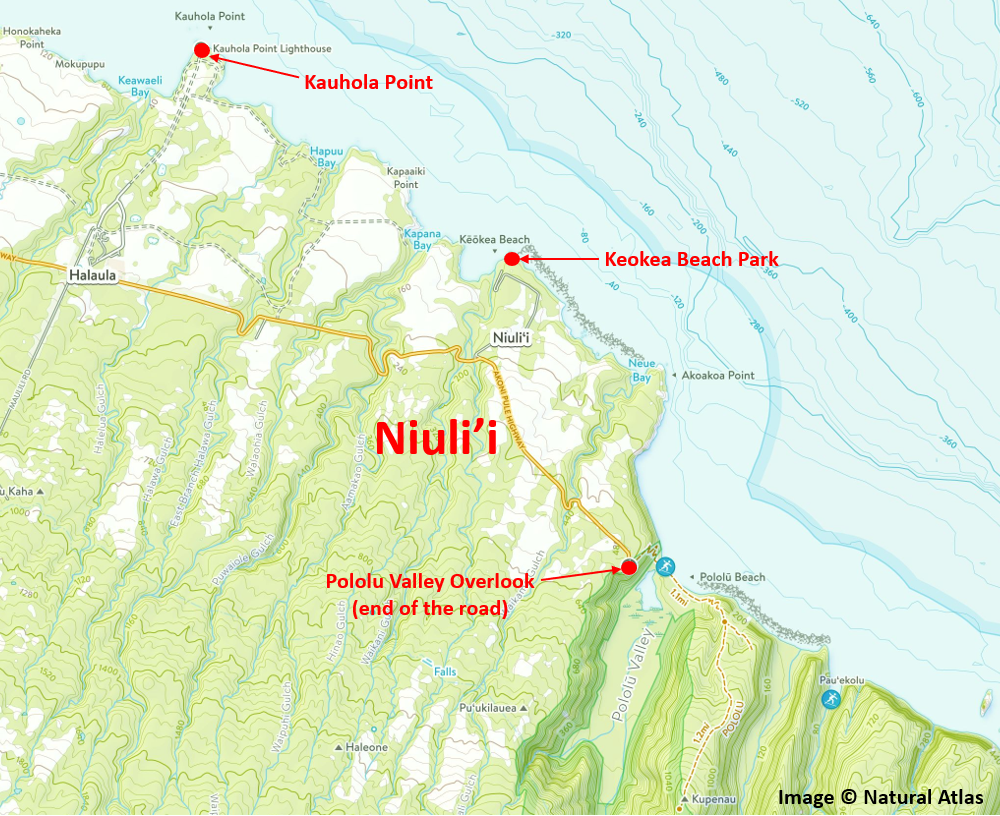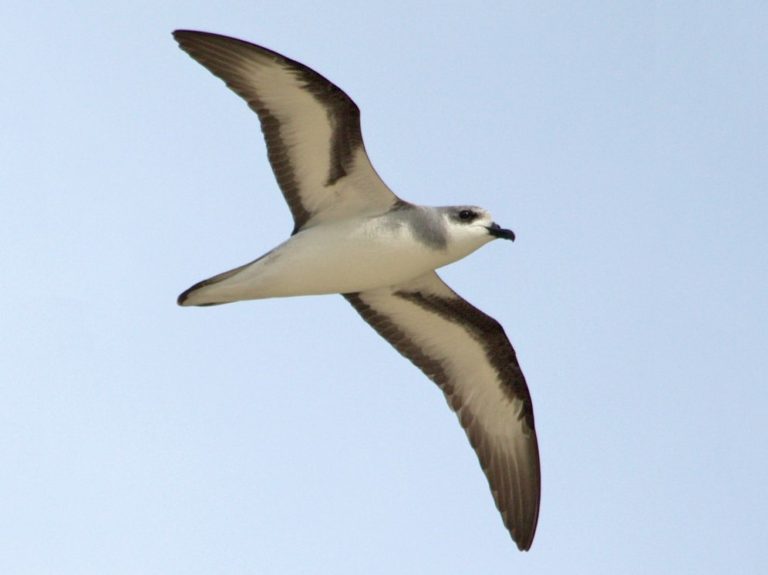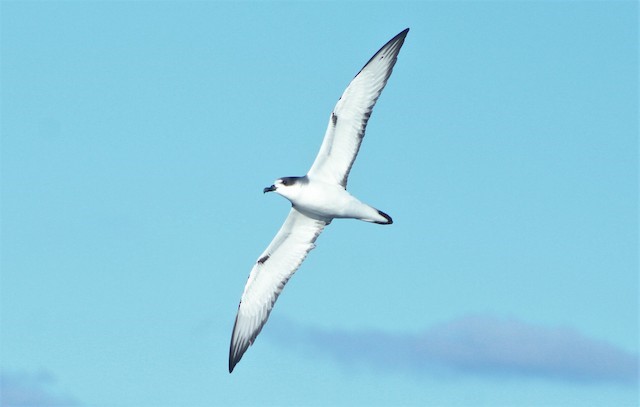Niuli’i, Big Island, Hawaii

The road through Kohala ends at a village called Niuli’i, where a remarkably diverse set of seabirds often approach close enough to be seen from shore through strong optics. Five Pterodroma petrels appear to be regular—Black-winged, Cook’s, Mottled, Juan Fernández, and Hawaiian—and five shearwater species have been reported regularly: Wedge-tailed, Buller’s, Sooty, Short-tailed, and Newell’s. Both Yellow-billed and Red-tailed Tropicbirds apparently nest high on the cliffs, with “Hawaiian Noddies” at the bottom, and Hawaiian Ducks and Hawaiian Hawks in the adjacent valley.
Orientation
Directions
Niuli’i is at the northern end of the Big Island, along the Kohala coast, at the end of the Akoni Pule Highway, approximately an hour and a half’s drive (60 miles) north of Kailua-Kona and two hours (85 miles) northwest of Hilo.
From Kona International Airport. Take Route 19 north for 26 miles to Waikui. Turn left onto Route 270, the Akoni Pule Highway, and follow it for 26 miles to Niuli’i.
From Hilo. There are two roughly equidistant routes from Hilo. To follow the coast, take Route 19 north out of Hilo and follow it for approximately 60 miles to Waimea. Just past Waimea, fork right onto Kohala Mountain Road, then follow it for twenty miles to its end at Route 270. Turn right and go five miles to Niuli’i.
To take the interior route, from Hilo’s airport, turn left (south) onto Kanoelehua Avenue, go one mile, turn right (west) onto Puainako Street (Route 2000). Remain on Puainako through its dogleg intersection with Komohana Street at the University of Hawaii – Hilo Campus, then continue west on Puainako which departs Hilo and becomes Saddle Road.
Approximately 54 miles from the university, you will reach Waimea. Turn left onto Route 19, go about two miles, then fork right onto Kohala Mountain Road, follow it to Route 270, turn right, and go five miles to Niuli’i.
Birdfinding
Niuli’i is the last settlement on the Big Island’s northern road, the Akoni Pule Highway. It has two sites of special interest for birds: Keokea Beach Park and Pololu Valley.
Keokea Beach Park. The headland beside Keokea Park has proven to be an extraordinarily productive vantage point for seawatching—especially for Pterodroma petrels. The prime locations are best accessed from along the road about a quarter-mile before reaching the park itself. As with seawatches in general, the birds are often too distant to see clearly, and a strong spotting scope is at least preferable, if not essential.
The five Pterodroma species that have been reported regularly are Black-winged (April-October), Cook’s (April-October), Mottled (September-October), Juan Fernández (July-October), and Hawaiian (April-October). Each of these would probably be identified more often, and probably a few others as well, if the observations were at slightly closer range—considering their similarities and the difficulty of identifying some of them even with clear photographs.

Mottled Petrel can be seen regularly from Keokea Beach Park, and its unique pattern makes it identifiable. © Koel Ko

Other seabirds seen consistently include: Yellow-billed and Red-tailed Tropicbirds, Bulwer’s Petrel (mostly October), Wedge-tailed Shearwater (mostly April-October), Buller’s Shearwater (mostly July-October), Sooty Shearwater (mostly August-November), Short-tailed Shearwater (mostly November), Newell’s Shearwater (mostly May-September), Great Frigatebird, Red-footed Booby (mostly May-October), Brown Booby, and “Hawaiian Noddy”.
Species reported less often have included: Laysan and Black-footed Albatrosses, “Hawaiian Storm-Petrel”, Christmas Shearwater, Masked Booby, and Common Fairy-Tern.
Kauhola Point. A more prominent headland along the same coastline, with greater apparent seawatching potential but inferior access, is Kauhola Point, approximately two miles west-northwest of Keokea. At the crossroads in Hala’ula, turn northeast onto Pratt Road, which bends north and ends at Old Kohala Mill Road. Turn right, go through the compound, and follow the dirt road as far as you are comfortable. Kauhola Point is about a mile north of the compound.
Pololu Valley. The road ends at the Pololu Valley Overlook, with a view of the lush canyon. At the foot of the overlook is a pond and adjacent marsh, which is one of the most consistent spots on the Big Island for Hawaiian Duck. The overlook is also a good vantage point for Hawaiian Hawks and Yellow-billed and Red-tailed Tropicbirds which soar over the canyon, and sometimes “Hawaiian Stilt” and migratory waterfowl in the pond. “Hawaiian Noddy” nests on nearby sea-cliffs and can often be seen from the overlook. Landbirds often seen around the overlook include Red-billed Leiothrix and Chinese Hwamei.
The overlook is also the parking area for the Pololu Beach Trail, which descends 500’ via switchbacks down to the picturesque lava-boulder beach below. The beach is not recommended for bathing—the substrate is uncomfortable and the currents are dangerous. Those who decide to hike the trail must be prepared to wade across the mouth of Pololu Stream to reach the main beach. The trail then continues up the next ridge and climbs to its summit about a mile inland.

A few pairs of Red-tailed Tropicbird nest along the Kohala Coast, including the cliffs at Pololu. © Pablo Andrés Cáceres Contreras
Services
Accommodations
The nearest cluster of large hotels is around Waikoloa, about 30 miles (about 45 minutes’ drive) southwest of Niuli’i. Within the Kohala Coast area, there are a few small hotels, including the Kohala Club Hotel (1-808-889-6793) and Hawaii Island Retreat, 1-808-889-6336.
There is another a handful of hotels in the town of Waimea, about 45 minutes’ drive (30 miles) south of Niuli’i. Reasonable options there include:
Waimea Country Lodge, 1-808-885-4100
Kamuela Inn, 1-800-555-8968
Notes
When to Visit
Seabird diversity at Keokea Park is generally highest between September and November, when several species of tubenoses migrate from the North Pacific to the South Pacific, and encounter the Kohala coastline en route. Observation conditions are generally best in the afternoon.



